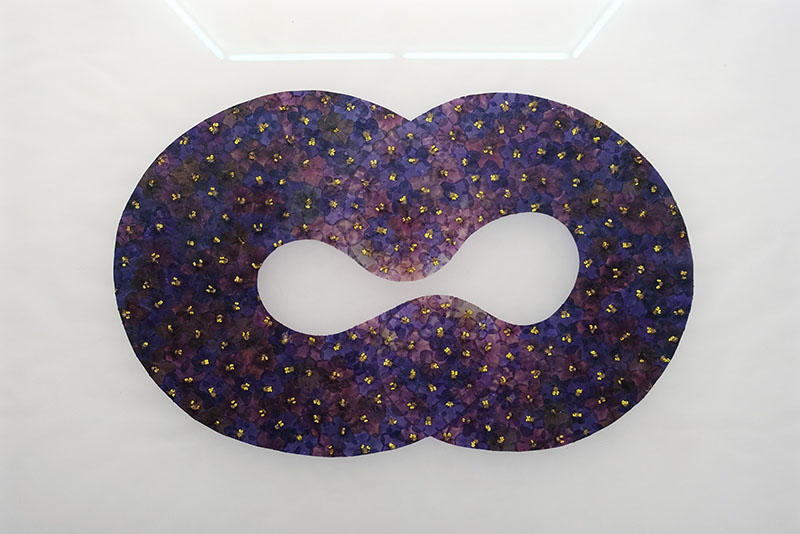
Zwitschermaschine, Berlin
October 2019
Sound Happening: Narval
(Evgenija Wassilew & Peter Strickmann)
Please scroll down for CVs and the text “About working with flowers” from my catalog
Organic Shapes
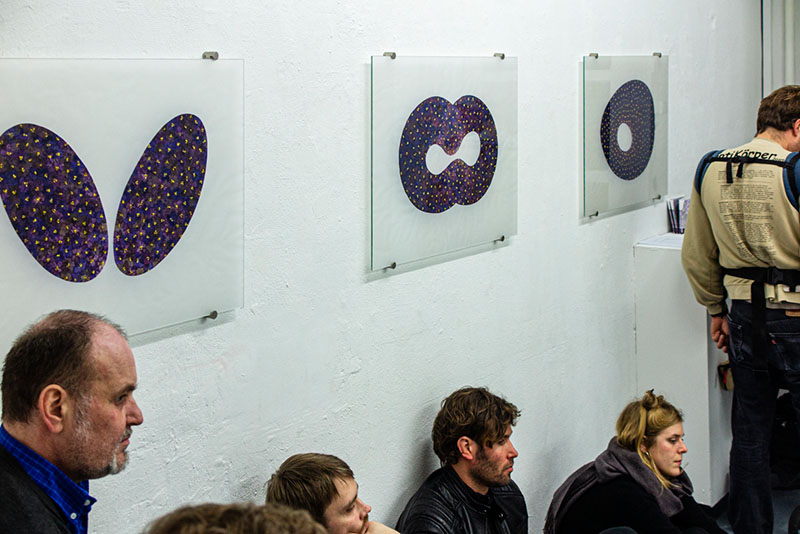
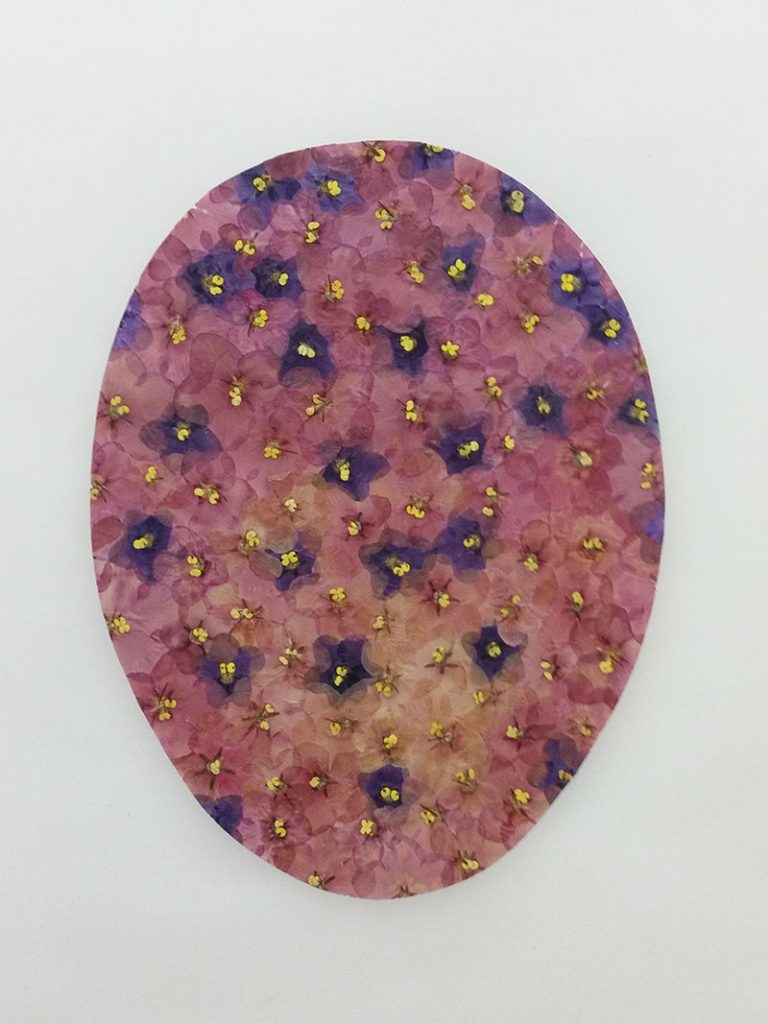
Organic Contamination
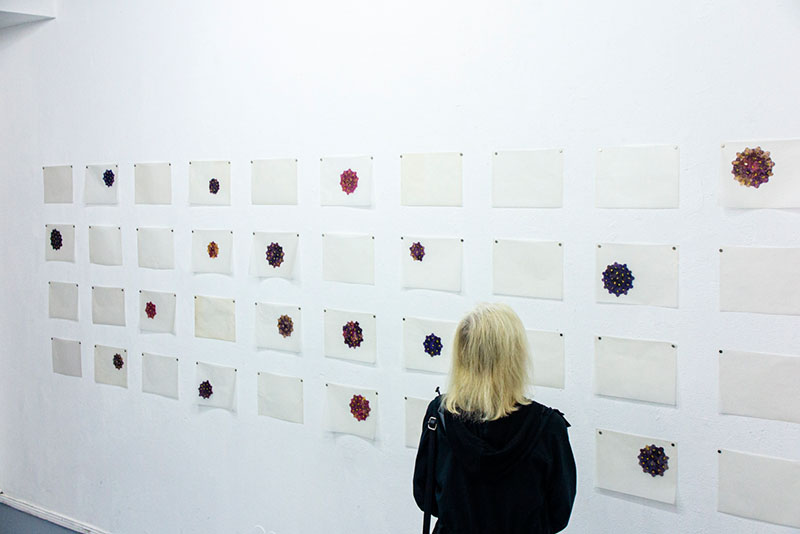
Ancestry
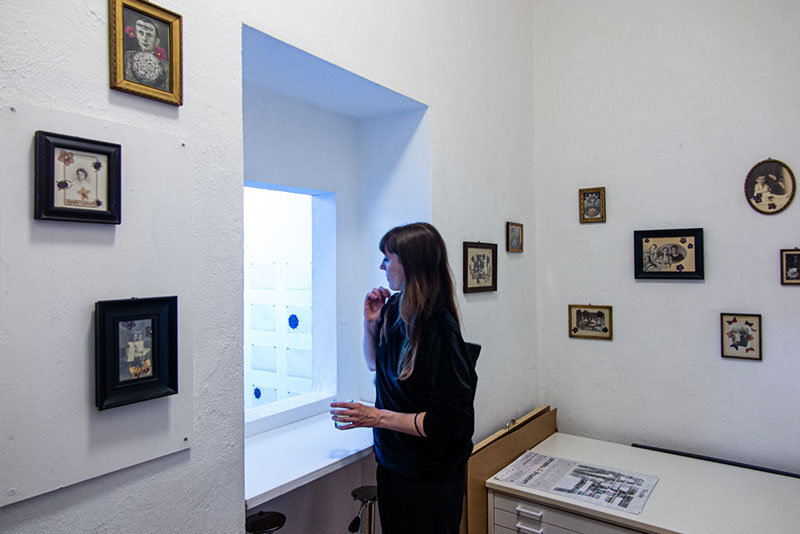
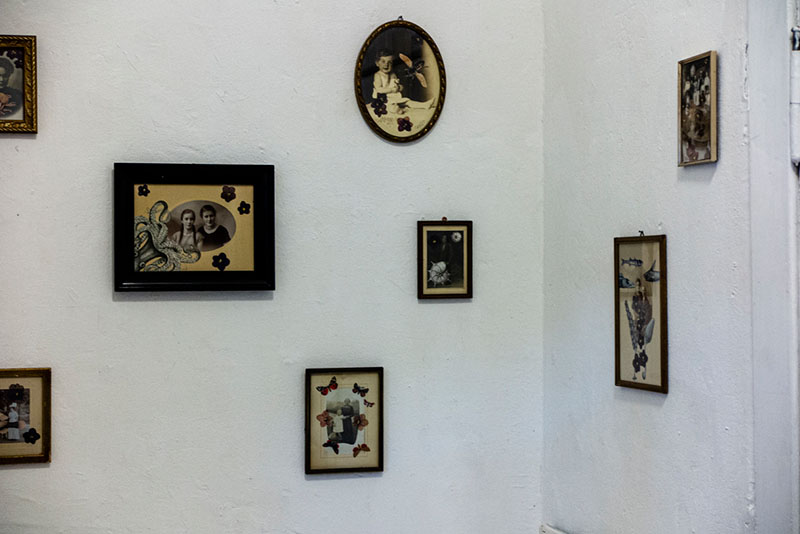
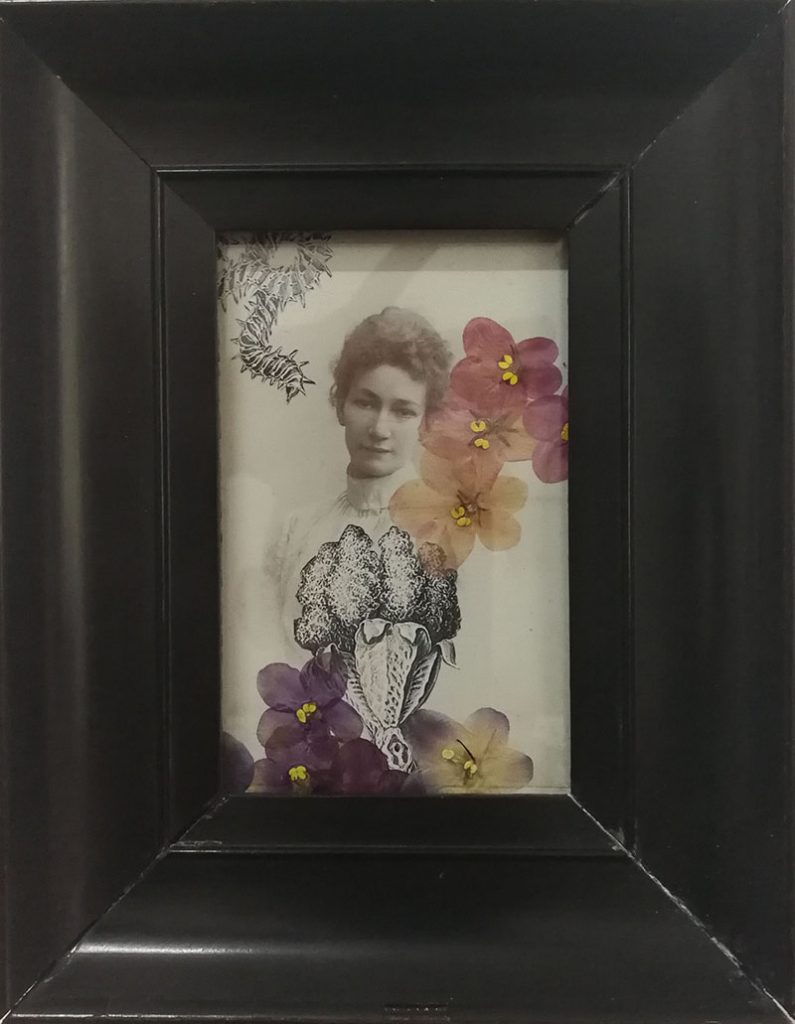
Sound Happening: Narval
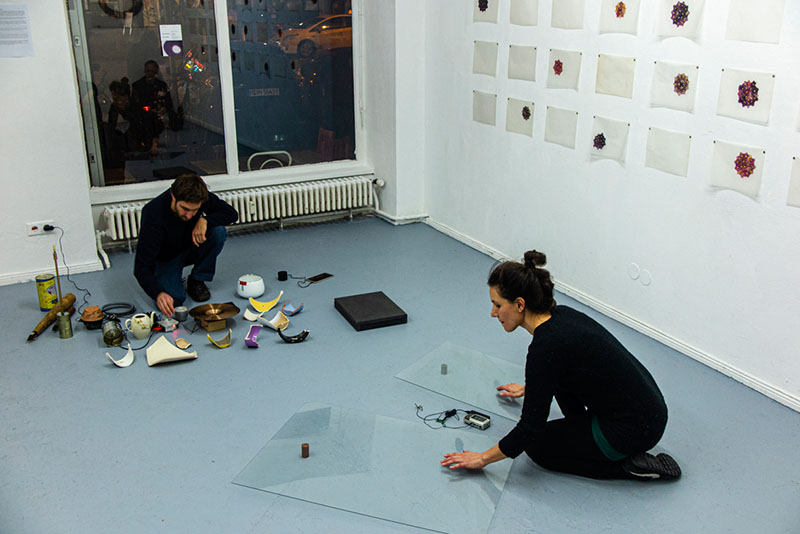
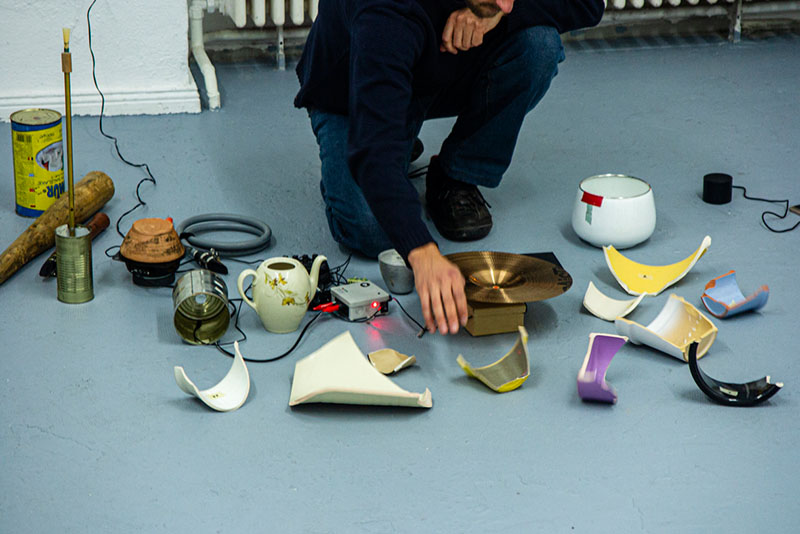
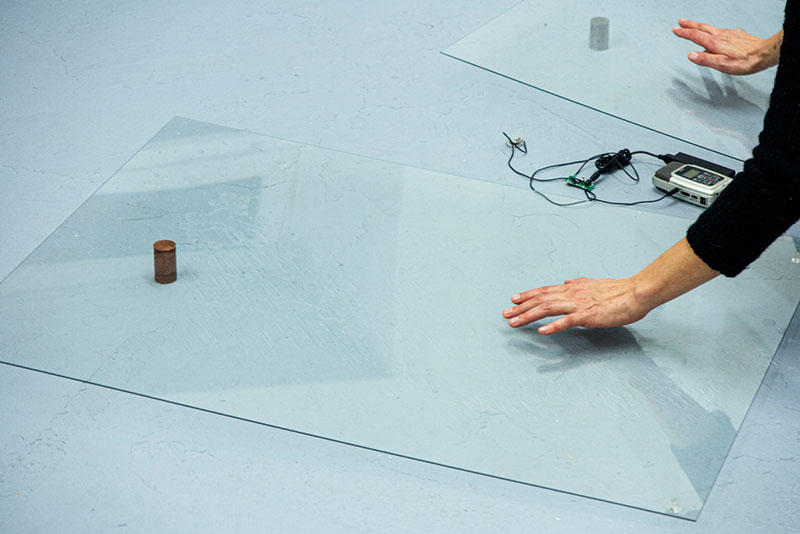
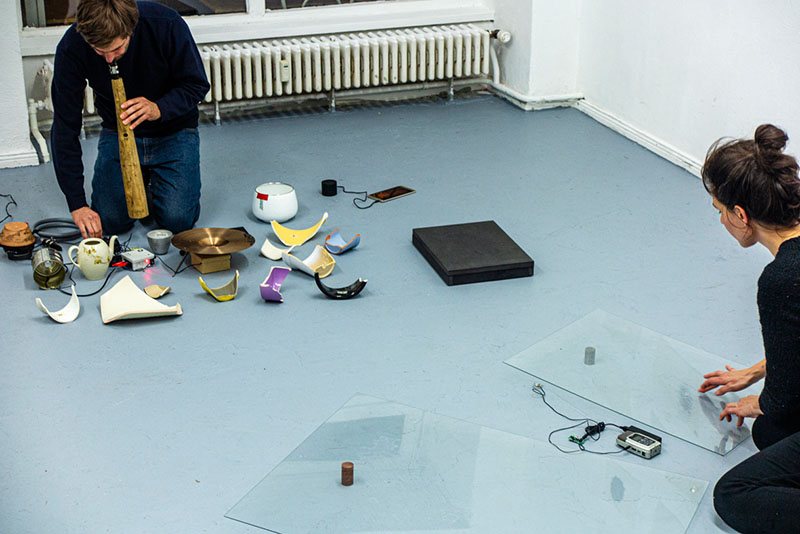
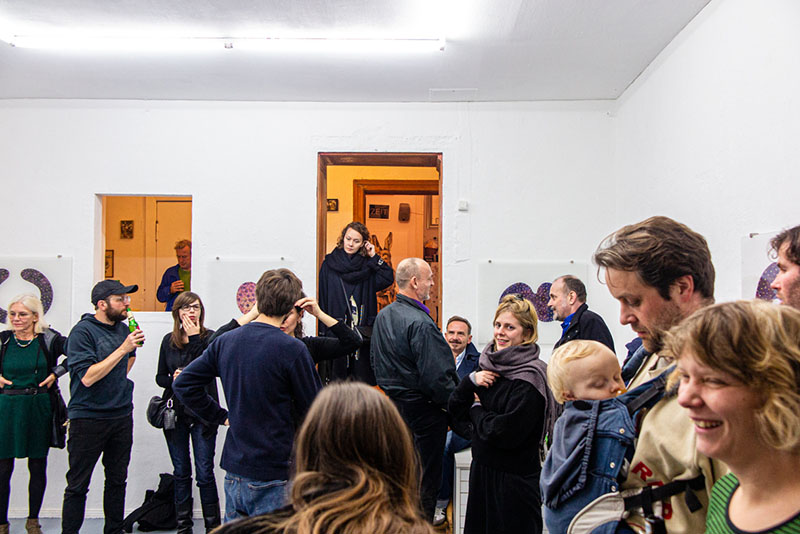
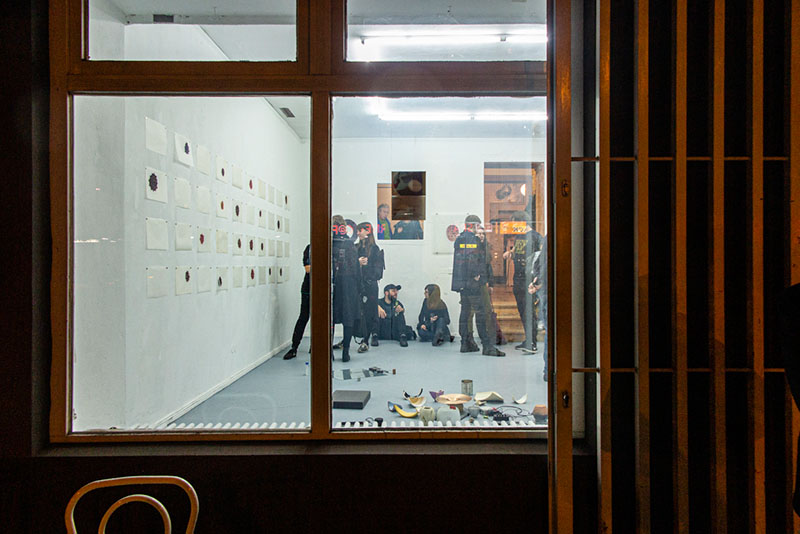
Photographies by: Petrov Ahner, Frank Benno Junghanns and the artist
The Duo Narval draws on sounds of possible languages. The minimal and sculptural sound happenings emphasize contrasts, sparseness and timbre and meet in improvisations between chance and control.
Peter Strickmann: Objects, Feedback, Wind, Ceramics, Smartphone
Evgenija Wassilew: glass, vodka, alarm, resonance loudspeaker, smartphone
Peter Strickmann installs, performs and manipulates audible activity in public and private environments, observing, confronting and questioning the habits of hearing in both routine and extraordinary contexts. He realizes installations, essayistic projects/field trips, as well as situational sound actions and concerts in various groups, duos and solo.
Evgenija Wassilew’s work comprises installations and objects, performative sound recordings as well as sound and text based records. In doing so, the respective recording, translating and compositional methods touch limits and possibilities of communication, in which different worlds of perception encounter.
About working with flowers
The flowers used provide a wide range of color, reaching from white to deep purple. These colors change with the process of drying and pressing, whereby the blossoms of one plant, depending on the moment of „harvesting“ and the state of wilting undergo different changes. The results of this process are not exactly predictable. The pressed blossoms are not homogenous; each blossom is intricately different from the next, with varying shapes, color patterns, and veining creating diversity among the material.
Another important feature of the organic material is their transparency. Working with the color and intensity of the pigment in the process of overlaying the flowers, the levels of transparency create a necessity to find balance among the varying blossoms.
The individual pieces in the body of work “Organic Shapes“ are constituted of 200 – 300 blossoms, although 400 – 500 blossoms are pressed to realize each work. A limited, heterogeneous (s.a.) stock is available, embedded in constellations of ongoing change. Through the inspection of the available material and the definition of the shape, diverse combinations can be formed from gradients of color and transparency.
From this point on, the work evolves through the interaction of the artist with the blossoms.
The trajectory of making is substituted by a process of mediated growth that is induced by the singular qualities of each blossom. The work grows with and from the material.
The process of growth, thought to be in contrast to the process of making, is the starting point in the material and realization of the artistic process united in one.
Tim Ingold describes this way of production in an encompassing reflection of worldcreation as follows:
“The maker´s ambitions, in this understanding, are altogether more humble than those implied with the hylomorphic model. Far from standing aloof, imposing his designs on a world that is ready and waiting to receive them, the most he can do is to intervene in the worldly processes that are already going on, and which give rise to the forms of the living world that we see all around us – in plants and animals, in waves of water, snow and sand, in rocks and clouds – adding his own impetus to the forces and energies in play.“
The aesthetic direction of these pieces, which is briefly described here, has developed since 2016. It was realized with “Usambara (Hybrids)“ and “Organic Contamination“. With the most recent works, “Organic Shapes“ it has fully unfolded.
The pieces of the Organic Shape / egg-shaped series integrate aspects of similitude and mimikry into the morphogenetic process.
